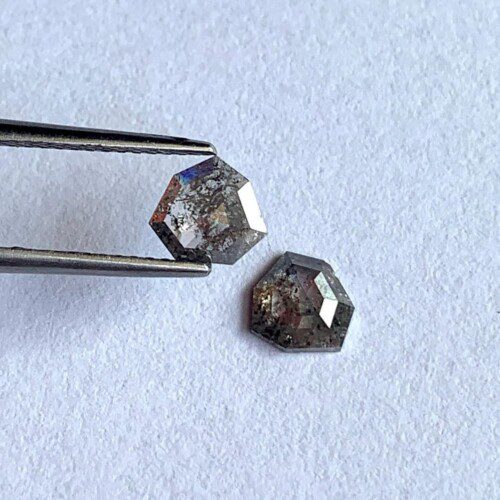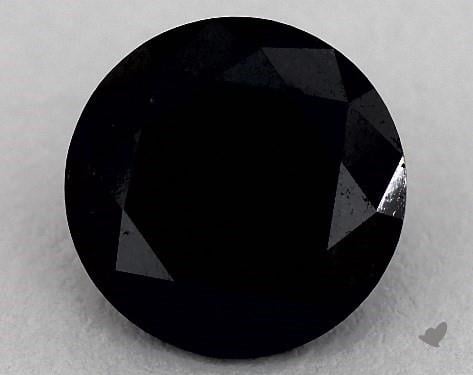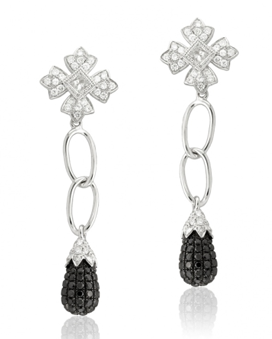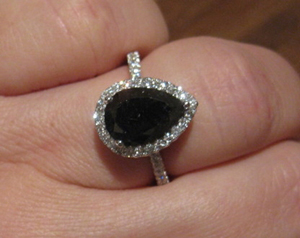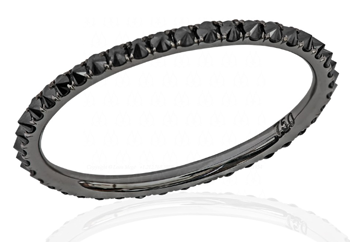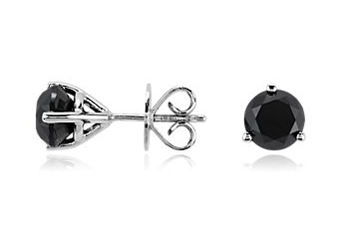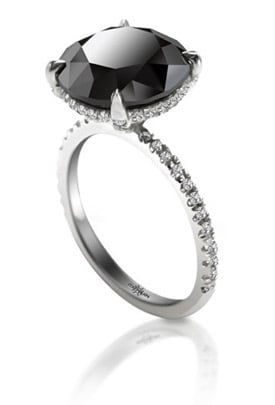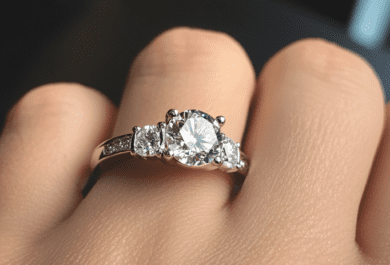Black Diamonds Described
While large natural black diamonds like the Black Orlov (below) are exceptionally rare, you’ll find black diamond jewelry readily available. Most black diamonds have been treated for improved durability. Irradiated or heat treated black diamonds will cost substantially less than untreated or colorless diamonds. As is the case with all fancy colored diamonds, naturally occurring colors are the most valuable and desired, though you may have to look a little harder to find them.
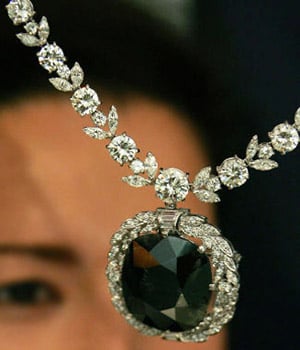
The Black Orlov (Image Source: AFP/ Carl De Souza)
One of the most remarkable natural black diamonds in the world, is the 67.50 carat Black Orlov.
Black Diamond Price
When it comes to black diamonds, it’s essential that you work out whether the diamond is a natural black or has been treated. This can get a little confusing, as a diamond may be listed as natural, but this only indicates that the diamond itself is natural, not the color.
Treated diamonds are considerably cheaper than natural, black diamonds but naturals are also very affordable. This 1.86ct modified cushion cut black diamond by James Allen is priced at $3,610 – a very reasonable spend on a diamond of this weight and quality. The price of black diamonds is lower than other fancy colored diamonds.
Natural Black Diamonds
When we buy colorless diamonds, one of the things we look for is eye-clean clarity, i.e. no visible inclusions. Diamond inclusions can take many forms but often appear as black (pyrite/graphite) marks, dots, and streaks within the diamond. Black diamonds take these inclusions and make them a key feature. Natural black diamonds are essentially colored by these dark inclusions or impurities, which are great in number and evenly distributed throughout the stones. They are most commonly found in the mines of Brazil and Central Africa.
Diamonds are prized for their durability; scoring a 10 on the Mohs scales of hardness, colorless diamonds are extremely resilient, making them perfect for everyday wear. Poorly situated inclusions can compromise the durability of a diamond, however when these inclusions are evenly distributed (as is the case in natural black diamonds) the result is an even harder diamond. Before taking their place in the world of fine jewelry, black diamonds were used for industrial purposes due to their exceptional hardness and this feature continues to be part of their appeal to modern buyers.
It is worth noting that some buyers do report black diamonds cracking or shattering when bashed against a hard surface; in truth, all diamonds can crack if they are struck with enough force, but unfortunately positioned graphite in a black diamond may make them more susceptible. It is more common for treated (irradiated) black diamonds to shatter, so if you are looking for a black diamond that will stand the test of time, natural is the way to go.


